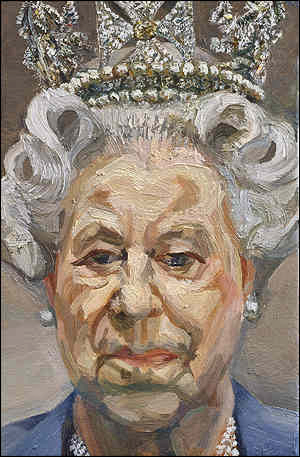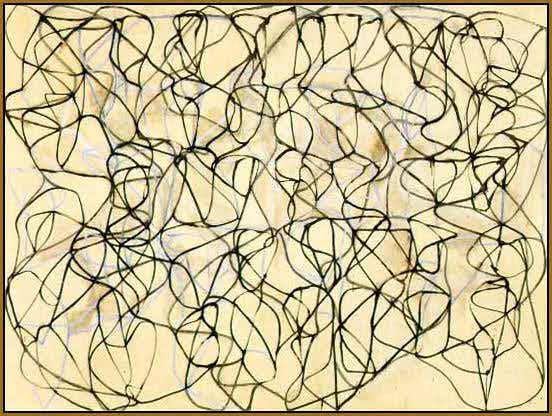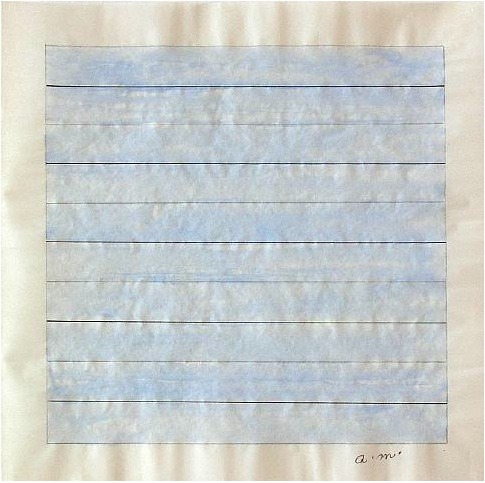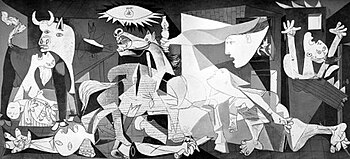Pat Steir is a painter, but deceptively so. In order to determine which artists to feature for my research, I searched them on google images. When I searched Steir, I found image upon image of water, which I initially assumed to be sculptural. Upon closer inspection, however, these images were painted.
Some of Steir's early work, such as "Nothing," which is oil painted on canvas in 1974 (posted below), deals with symbols.
Specifically, Steir stated that she "wanted to destroy images as symbols." In order to do so, she painted the image, and then crossed it out. While the physical product does not relate to my artistic experience, the concept does. Much of what we learn in basic drawing and painting classes is to illustrate what is present, not what we think is present. For example, we all grow up with the knowledge that a face is round, with two eyes, a nose, and a smiling mouth. When it comes time to do self portraits, however, this basic knowledge no longer satisfies. Instead, we must focus on the shape of the jaw and the hairline, the fullness of the lips and the prominence of the nose. We are forced to stop painting what we think we know and paint what really is, or end up with an unsatisfactory product.
Steir's later work contains many of the water images that I referenced earlier. One of these pieces is a triptych entitled "Foss," painted in 1993 and posted below.
What really strikes me about these water pieces is how realistic they are. One of my biggest struggles with painting is texture, particularly in things such as folds, and getting them to look realistic. "Foss" is so impressive to me because it could be water falling, or it could be frozen ice. Either way, it looks like something you could reach out and touch.
Another one of the art classes that I am taking this semester is 3D Design, and our last project dealt heavily with texture. We had to look at images and figure out how to recreate a texture on a three dimensional level. The image in the middle of the triptych would be one of the easier ones to do this from, as the highlights and lowlights would serve as guides for where to carve out and where to leave elevated. The fact that I think I would be able to translate a painting to a three dimensional piece, simply based on the attention given to said painting, is absolutely astounding.
















